How to Choose a Spotting Scope You’ll Love
Last Updated on
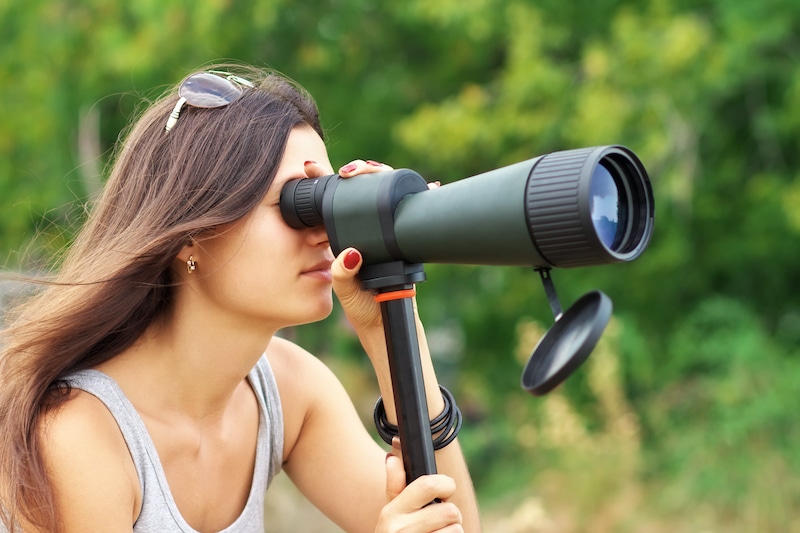
A spotting scope is a big investment and the next logical step up from a pair of binoculars. If you’re ready to buy a spotting scope, you probably want to learn about them from every angle first, so you can make an informed decision. Lenses, magnification, angle, digital needs, and the way you’ll be using your new scope are all top factors in the decision-making process. We’ve broken it down for you below so you can choose a spotting scope you’ll love.

What to Look for in a Spotting Scope
Whatever you do, don’t buy a spotting scope blindly. It’s a lot of money to slap down for something that may not work for you. It’s important that you try them before you decide on the most comfortable magnification strength, lens size, field-of-view, eye relief, weight, and proper durability. This will ensure you find something you won’t regret buying.
Magnification & Lenses
Every spotting scope comes attached to a set of numbers, such as 20-60×60. The first part of that equation is the magnification range (due to zoom potential), which is at 20-60 times magnification.
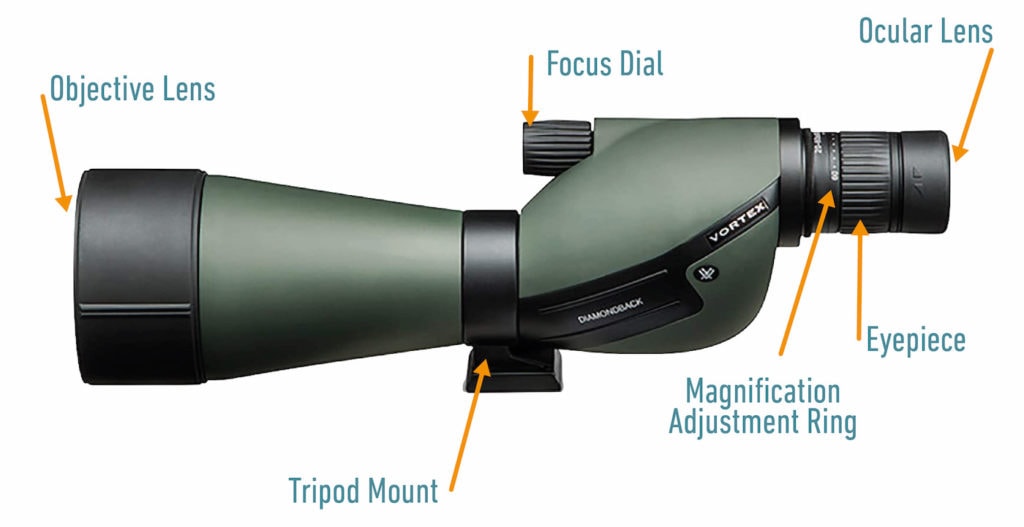
The second part is the objective lens size, in millimeters. In this example, it’s 60mm, but the largest spotting scopes can have lenses that exceed 100mm.
Magnification
Magnification can be tricky to get right. Many people think the higher the magnification, the better the scope. This isn’t always true. The more powerful your lens, the more you’ll see every quiver and shake in your glass, to the point where it could inhibit you from seeing anything clearly. Most spotting scopes range anywhere from 15x to 60x magnification. Any more than this and you’re getting more into telescope territory.
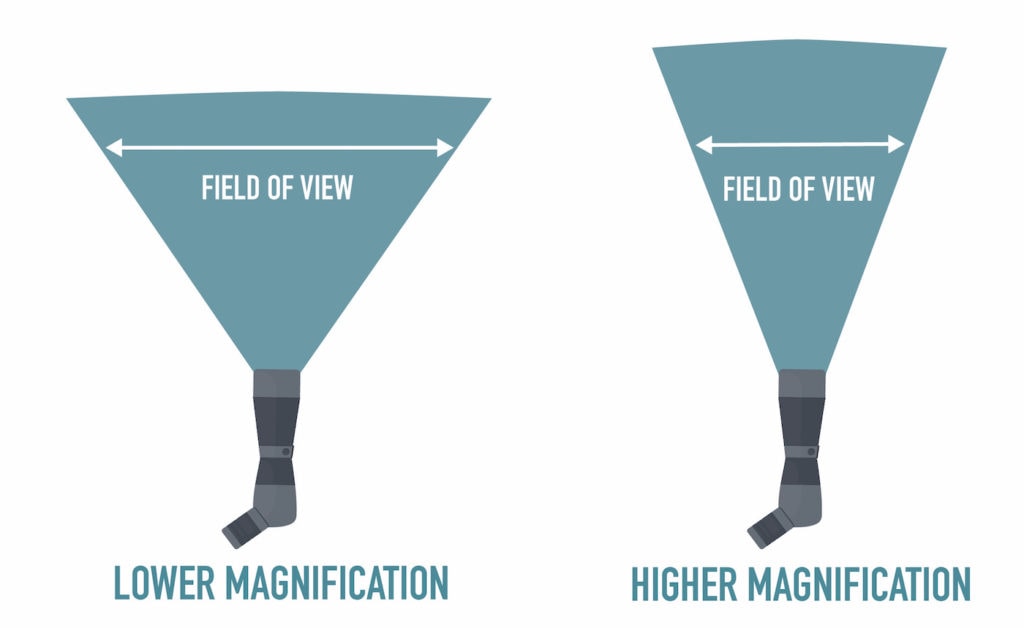
Magnification can also affect your field of view. The higher the magnification, the narrower your view. If you need to see broad landscapes, try cutting back on the power.
- Low magnification power = wider field of view
- High magnification power = closer focus
Lenses
The proper lens can be hard to choose, as well. Too big of a lens, and you’ll be drawing in too much light and washing out your image. Too small a lens, and you’ll have the opposite problem. Most spotting scope lenses range between 50-80mm, as this is an ideal range for light absorption. You can find larger lenses if you search, but they’re not likely to add quality to your image unless you’re using them for stargazing.
Keep in mind that larger lenses mean more weight, too. If you’ll be toting your scope around in a backpack, you’ll probably want to lean toward a lighter device. Coating is another factor with lenses. For optimal brightness and color, fully multi-coated lenses are best.
- Low light conditions require larger lenses
- Daytime conditions require smaller lenses
- 50-80mm lenses offer maximum flexibility
Fixed Eyepiece vs Zoom Lens
Many scopes come with a fixed eyepiece, meaning your magnification strength won’t change. This can be perfect for steady observations, such as astronomy or surveillance. If you need versatility, you can always swap your eyepiece for a stronger one.
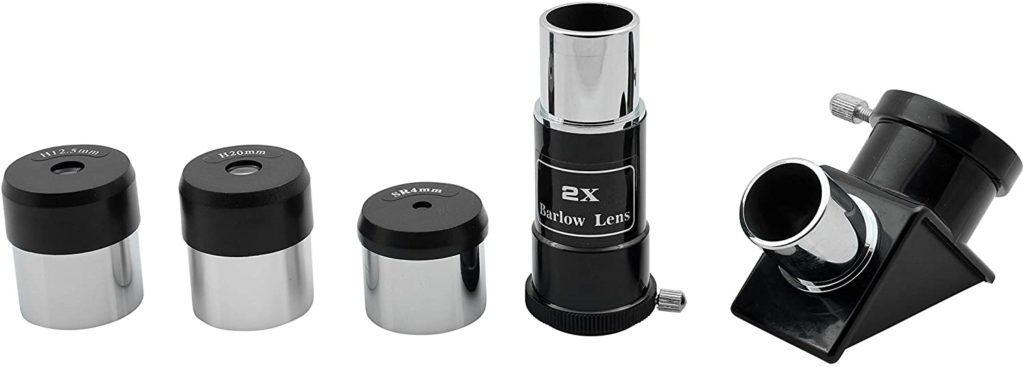
But the benefit of a zoom lens is that you get that versatility automatically. This is great for hunting or bird watching. It also means you won’t need to carry around extra lenses when you’re on the go. A 20-60x zoom is a good average to cover your bases.
- Fixed eyepieces are great for astronomy or surveillance
- Zoom lenses are better for hunting and birdwatching
- Zoom lenses can act as fixed eyepieces, too, and more versatile
Close Focus and Eye Relief
Your spotting scope is meant to be far-sighted, but it’s good to know what kind of close focus range it has, as well. Close focus is the distance at which you achieve image clarity. If you point your spotting scope at your knees, your view will be blurred. Point it 20 feet away, and suddenly you have a sharp image. You’re most likely to get a close focus range around 25 feet. If it’s much farther, you’ll lose some versatility.
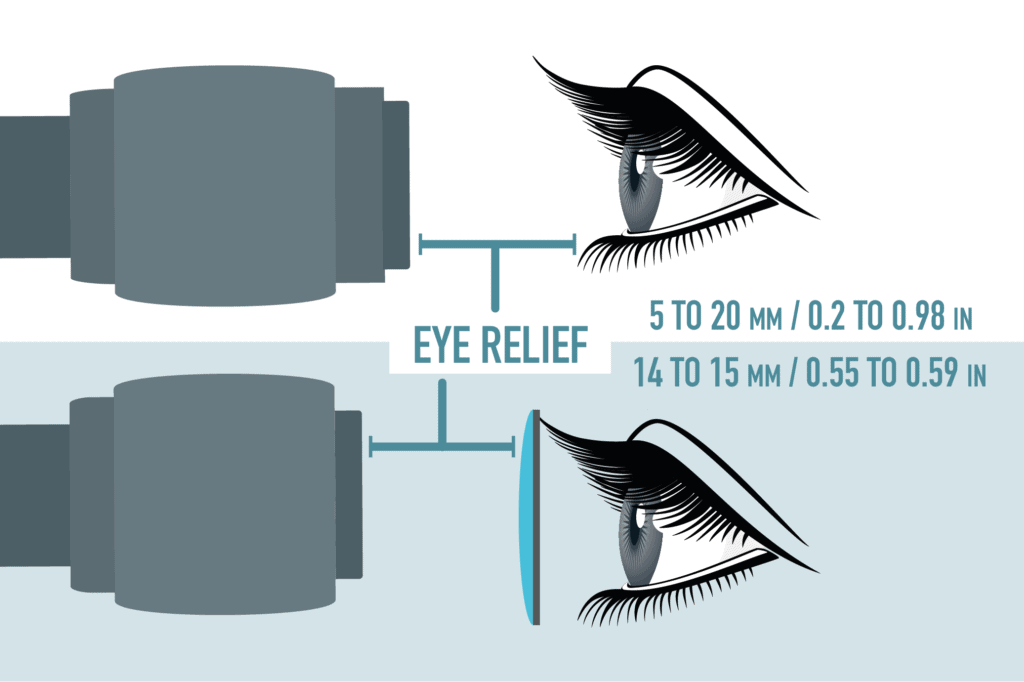
Another factor is eye relief. This is the space between the eyepiece lens and where your eye rests. If you wear glasses or will need goggles for glassing, you’ll want more eye relief.
- Close focus ranges start to degrade above 25 feet
- Users who wear glasses will need more eye relief
Straight vs Angled
The debate over straight vs. angled spotting scopes will never be resolved, but your personal preference is important here. An angled scope is great for birding, especially if you’ll be looking into treetops. A straight scope is better for hunting, as it’s easier to track game quickly and efficiently with a straight line-of-sight. Consider what angle your neck will be in when you’re glassing. If you’ll need to strain your neck to see in a straight scope, go for the angled.

Group viewing is another common factor in choosing. If you’ll be glassing alone, you won’t need to worry about adjusting your height, so a straight scope is fine. If you have a group of people, an angled scope is better suited to everyone’s varying heights (it requires you to bend rather than crouch at the right height).
- Straight scopes are better for hunting
- Angled scopes are better for sharing
Should You Consider a Tripod?
The high magnification strength of a spotting scope can cause image instability due to hand shakiness or wind. So, it’s a good idea to mount your scope to a tripod for clear sight. If you’re using a straight scope, an adjustable, full-size tripod is your best bet.

- Tripods provide stability
- Use a compact tripod for angled scopes
Are You Interested in Digiscoping?
One of the most exciting features of spotting scopes is digiscoping. This entails attaching a digital camera lens to your spotting scope to take high-definition pictures. Most digiscopers use the digital camera on their smartphones and hold them to the spotting scope’s eyepiece.
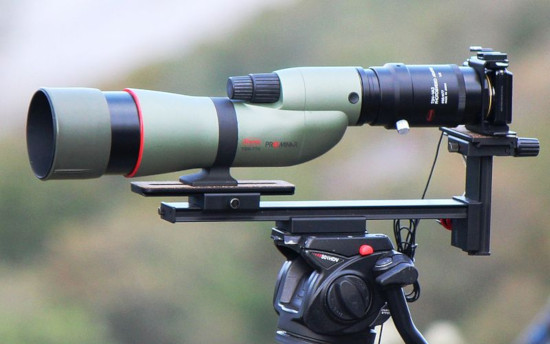
There are spotting scopes on the market, however, that will come with digital camera eyepieces. Though an expensive option, this can be exciting for birders, nature observers, and astronomers.
- Great for photographers
- Expensive

What Will You Use the Spotting Scope For?
The way you’ll be using your spotting scope is the biggest determining factor of what scope you’ll want to buy. We’ve broken down the most common scoping activities below to help you choose a scope fit for your hobby.
Birding, Wildlife, and Hunting
If you’re a nature lover, you’ll probably want decent magnification for wildlife viewing. This is especially true for hunting. If you get too close for a good image, you’ll risk scaring the animal away. For birding, a bigger lens can be beneficial. Looking into dark treetops means you’ll need to capture more light to see clearly. Go for an 80-100mm lens for optimum sight.
If you’ll be hunting or viewing animals across a plain, however, you’ll want to keep the lens size to around 80mm. You’ll probably also want a zoom eyepiece to capture those finer details, or to get a closer lock on game. A 20-60x range is ideal. See our Top 5 Spotting Picks for Hunting here.
Surveillance
There are many different conditions under which you may be surveilling, and your spotting scope should be versatile.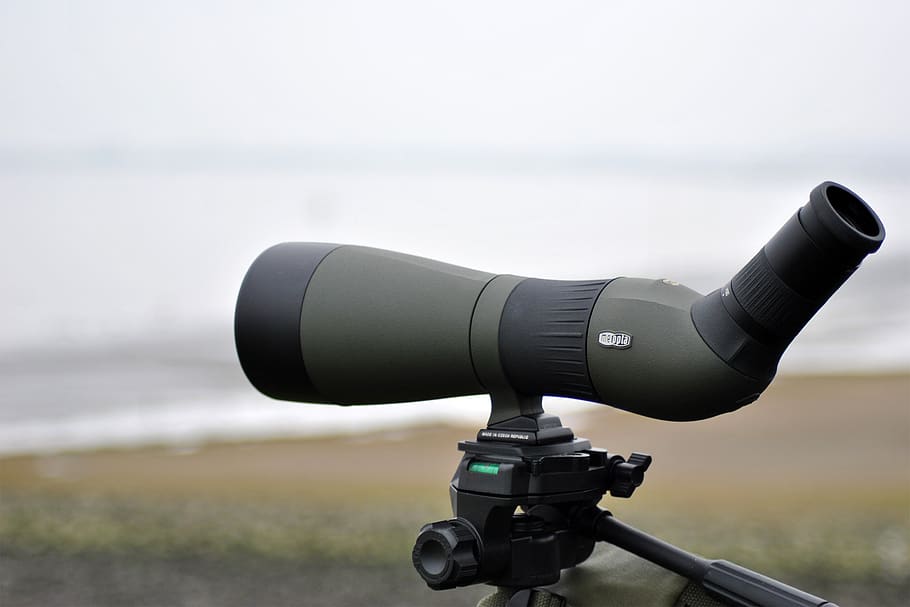
If you’ll be watching a specific area, a 30x fixed eyepiece can be perfect. It will keep you from having to make constant adjustments. You’ll likely want a smaller lens, as well, to keep your image clean in areas with a lot of light. A 65mm lens is a good middle ground.
Astronomy and Stargazing
You’ll want high magnification and a nice big lens to capture as much light as possible for astronomy. Go for a 20-60x zoom eyepiece and a hefty 100mm lens. You’ll definitely want a tripod at that magnification strength, but the extra zoom and brightness will be worth your while. Astronomy is a great opportunity to practice digiscoping, as well.
There’s an old saying that just because you can do something doesn’t mean you necessarily should. Keep in mind that spotting scopes aren’t actually designed for hardcore stargazing. The magnification makes it possible but telescopes are the far better option for exploring the celestial heavens.
- Use zoom lenses for birding and hunting
- Use fixed eyepieces for surveillance and astronomy
- Use tripods for high magnification conditions

Cost
As with all optics, there is a wide price range for spotting scopes. The good news is, angled or straight scopes run roughly the same. Depending on zoom and lens strength, though, your price could rocket up. If you aim for the middle of the road, you can find a decent spotting scope in the $200 to $400 range. Anything less than $100 is probably not worth your time, and anything more expensive may not offer much extra quality for the price tag.
- Straight and angled scopes are roughly the same price
- Good scopes can be found for $200
Before You Buy and After
Whatever you do, don’t buy a spotting scope blindly. It’s a lot of money to slap down for something that may not work for you. It’s important that you try them before you decide on the most comfortable magnification strength, lens size, field-of-view, eye relief, weight, and proper durability. This will ensure you find something you won’t regret buying. After you find the perfect scope, make sure to keep it properly cleaned and stowed in a protective case when it’s not in use. That way you’ll have your awesome spotting scope around for as long as possible.
Featured image credit: Florida Fish and Wildlife, Flickr
About the Author Robert Sparks
Robert’s obsession with all things optical started early in life, when his optician father would bring home prototypes for Robert to play with. Nowadays, Robert is dedicated to helping others find the right optics for their needs. His hobbies include astronomy, astrophysics, and model building. Originally from Newark, NJ, he resides in Santa Fe, New Mexico, where the nighttime skies are filled with glittering stars.
Related Articles:
How to Clean a Refractor Telescope: Step-by-Step Guide
How to Clean a Telescope Eyepiece: Step-by-Step Guide
How to Clean a Rifle Scope: 8 Expert Tips
Can You Use Binoculars to Look At Stars? How to Choose the Right Pair
How to Choose Binoculars for Bird Watching: 10 Expert Tips
Monocular vs Telescope: Differences Explained (With Pictures)
What Is a Monocular Used For? 8 Common Functions
How to Clean a Telescope Mirror: 8 Expert Tips
